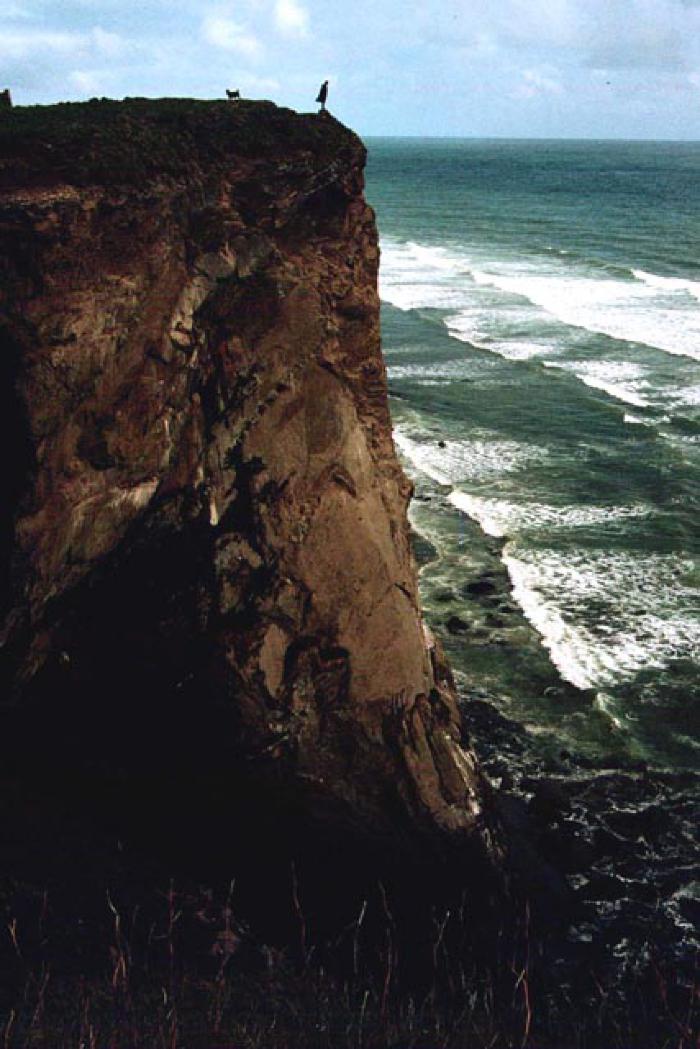Cliff — Penaq, P’hnaq

Over the past hundred thousand years there have been three distinct periods of glaciation in the Kodiak Archipelago. Streams of ice from Cook Inlet and from Kodiak’s own mountains carved deep, narrow valleys into the region’s bedrock. As the ice retreated and sea level rose about twelve thousand years ago, the sea inundated these ice-carved valleys, forming the archipelago’s irregular coastline with its fjords, inlets, straits, estuaries, rocky headlands, and dramatic cliffs.
Alutiiq people took advantage of Kodiak’s rough topography, even its precipitous cliffs. Hunters scaled rock walls with thick ropes of sea mammal hide to collect birds and eggs from nests on cliff faces. People gathering brush for firewood and fish smoking tied bundles of sticks together and dropped them over cliffs to the beach, where they could be collected by boat. And in late prehistoric times, entire communities retreated to villages built behind sheer cliffs to protect themselves from invaders. Here people perched logs secured with kelp lines on the cliff edge, ready to release on top of enemy invaders.
Alutiiq legends also mention cliffs. According to one tale, the first man and woman who entered the world paddled between two cliffs. When the cliffs closed in on their boat, they broke one end, creating the curved prow that has since characterized Alutiiq kayaks.
